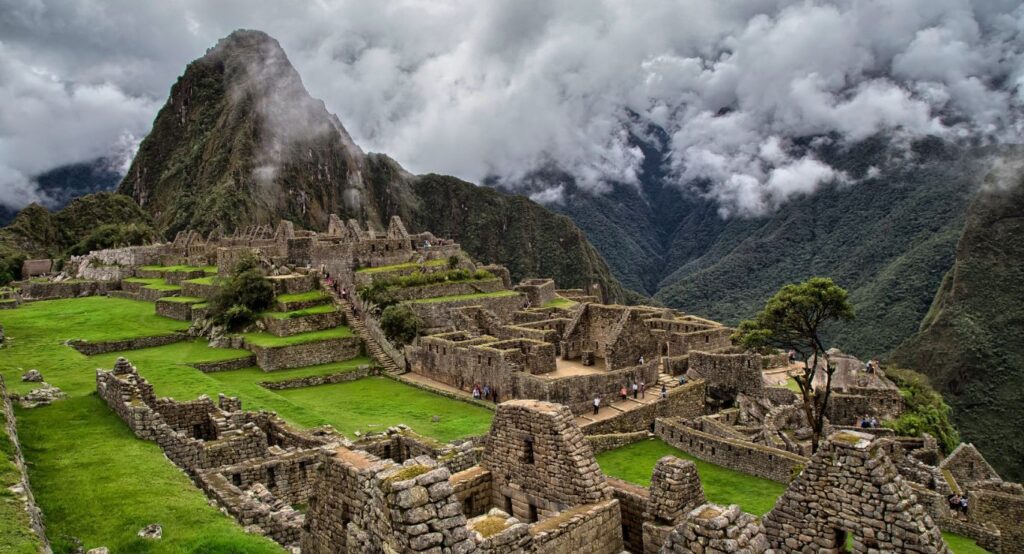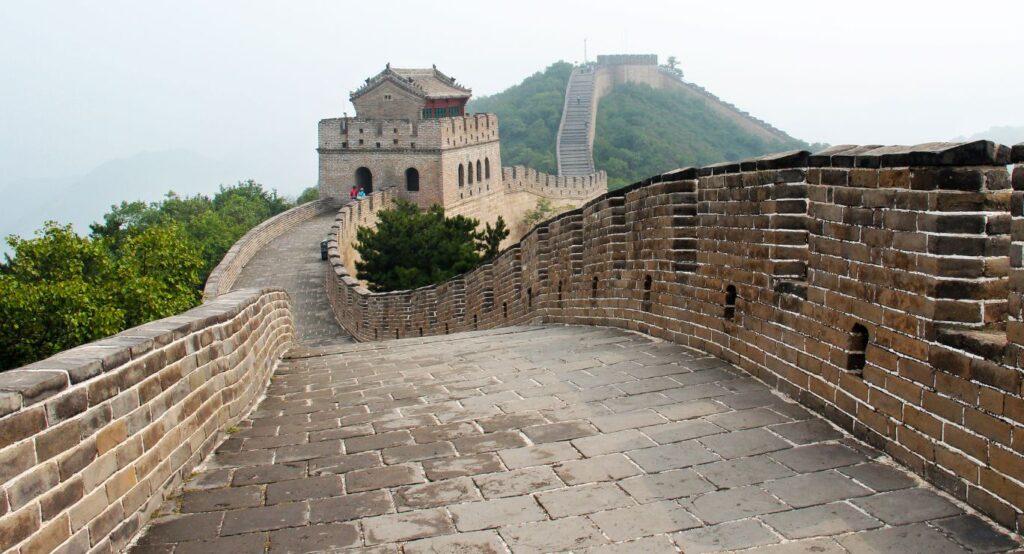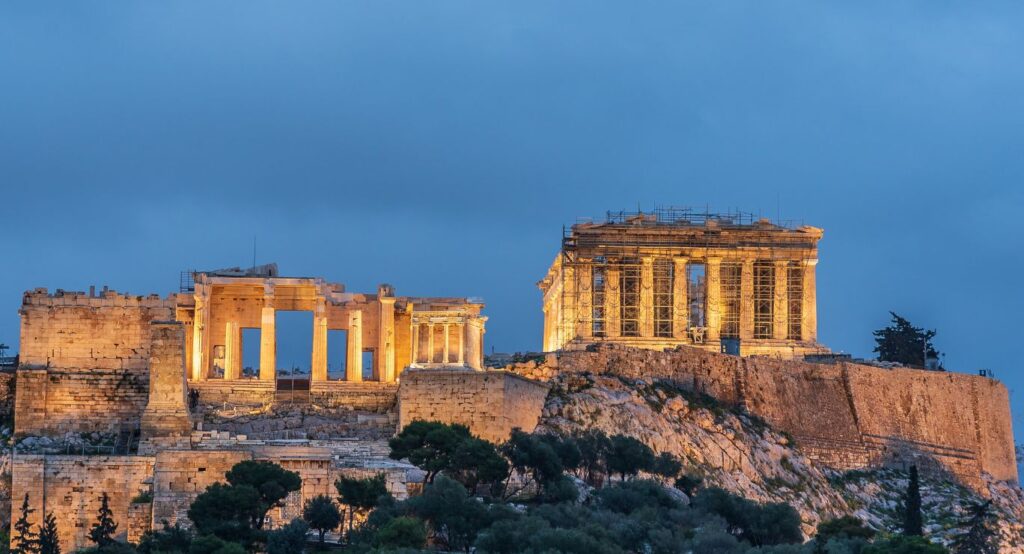Introduction:
Traveling is an enriching experience that allows us to explore diverse cultures, witness breathtaking landscapes, and delve into the depths of history. Among the myriad of destinations that beckon adventurers, UNESCO World Heritage Sites stand out as treasures of global significance. These sites are not only landmarks of outstanding universal value but also serve as testaments to human creativity, cultural diversity, and natural wonder.
In this blog post, we’ll embark on a journey to uncover the top 10 UNESCO World Heritage Sites worth visiting, each offering a unique blend of history, architecture, and natural beauty.
1. Machu Picchu, Peru:

Nestled high in the Andes Mountains of Peru, Machu Picchu is an ancient Incan citadel shrouded in mystery and majesty. Built in the 15th century and later abandoned, this awe-inspiring site was rediscovered in 1911 by archaeologist Hiram Bingham. Surrounded by verdant peaks and steeped in Incan mythology, Machu Picchu’s terraced fields, stone temples, and intricate engineering marvels continue to captivate visitors from around the globe. Whether you trek along the Inca Trail or board the scenic train from Cusco, the journey to Machu Picchu promises an unforgettable adventure.
2. The Great Wall of China, China:

Stretching over 13,000 miles across northern China, the Great Wall stands as a symbol of human ingenuity and perseverance. Constructed over centuries of dynastic rule, this monumental fortification was built to defend against invasions and protect the ancient Silk Road trade routes. Today, visitors can explore various sections of the Great Wall, each offering panoramic views of rugged landscapes and historic watchtowers. From the bustling city of Beijing to the remote stretches of Inner Mongolia, experiencing the Great Wall’s grandeur is a testament to China’s rich cultural heritage and timeless legacy.
3. Taj Mahal, India:

Regarded as the crown jewel of Mughal architecture, the Taj Mahal is a sublime masterpiece of love and devotion. Commissioned in the 17th century by Emperor Shah Jahan in memory of his beloved wife, Mumtaz Mahal, this iconic mausoleum is renowned for its symmetrical beauty and intricate marble craftsmanship. Set against the backdrop of the Yamuna River in Agra, India, the Taj Mahal’s ethereal white domes, ornate minarets, and lush gardens exude an aura of romance and grandeur. Whether bathed in the soft light of dawn or the golden glow of sunset, witnessing the Taj Mahal is a transcendent experience that leaves a lasting imprint on the soul.
4. Petra, Jordan:

Hidden amidst the rugged desert terrain of southern Jordan lies Petra, an ancient city carved from rose-colored sandstone cliffs. Known as the “Rose City,” Petra flourished as the capital of the Nabatean Kingdom from the 4th century BCE to the 2nd century CE. Accessible only through a narrow canyon known as the Siq, Petra’s architectural marvels include the iconic Treasury (Al-Khazneh), Royal Tombs, and the Monastery (Ad Deir). As sunlight illuminates the intricately carved facades and ancient ruins, visitors are transported back in time to a bygone era of trade, culture, and mystique.
5. The Colosseum, Italy:

A symbol of ancient Rome’s grandeur and power, the Colosseum stands as an enduring testament to the ingenuity of Roman engineering and the spectacle of gladiatorial combat. Completed in 80 CE, this colossal amphitheater could accommodate up to 80,000 spectators who gathered to witness bloody battles, theatrical performances, and public spectacles. Despite centuries of earthquakes and plundering, the Colosseum remains remarkably intact, offering visitors a glimpse into the heart of ancient Rome’s cultural and social life. Today, guided tours and immersive exhibits bring the Colosseum’s storied past to life, allowing visitors to envision the drama and intrigue that once unfolded within its ancient walls.
6. Angkor Wat, Cambodia:

Enveloped by dense jungle foliage and serpentine moats, Angkor Wat stands as the largest religious monument in the world and the crown jewel of Cambodia’s ancient Khmer civilization. Built in the 12th century by King Suryavarman II, this sprawling temple complex was dedicated to the Hindu god Vishnu before later being transformed into a Buddhist sanctuary. From its towering spires and intricately carved bas-reliefs to its tranquil courtyards and reflecting pools, Angkor Wat’s architectural splendor and spiritual significance continue to inspire awe and reverence. Whether exploring at sunrise, when the temple is bathed in golden hues, or at twilight, as shadows dance across its ancient stones, Angkor Wat offers a timeless sanctuary for reflection and contemplation.
7. The Acropolis of Athens, Greece:

Perched high above the bustling streets of Athens, the Acropolis stands as a symbol of democracy, philosophy, and artistic achievement in ancient Greece. Crowned by the iconic Parthenon, this ancient citadel served as the spiritual and cultural heart of Athens during its golden age in the 5th century BCE. Today, visitors can ascend the sacred rock of the Acropolis to admire its majestic temples, including the Erechtheion and the Temple of Athena Nike, while soaking in panoramic views of the city below. As the birthplace of Western civilization and the cradle of democracy, the Acropolis continues to inspire visitors with its timeless beauty and enduring legacy.
8. Serengeti National Park, Tanzania:

Spanning vast savannas, acacia woodlands, and rolling grasslands, Serengeti National Park is a natural wonderland teeming with wildlife and natural beauty. Located in northern Tanzania, this UNESCO World Heritage Site is renowned for its annual Great Migration, during which millions of wildebeest, zebras, and gazelles traverse the plains in search of fresh grazing grounds. Beyond the spectacle of the migration, the Serengeti is home to diverse ecosystems, including the Ngorongoro Crater, Olduvai Gorge, and Maasai Mara Game Reserve. Whether embarking on a thrilling safari adventure or witnessing a breathtaking sunrise over the savanna, exploring the Serengeti promises an unforgettable encounter with the wonders of the natural world.
9. The Great Barrier Reef, Australia:

Stretching over 2,300 kilometers along the northeastern coast of Australia, the Great Barrier Reef is the largest coral reef ecosystem on the planet and a UNESCO World Heritage Site of unparalleled biodiversity. Home to a dazzling array of marine life, including vibrant corals, tropical fish, sea turtles, and dolphins, the reef’s crystal-clear waters offer snorkelers and divers an immersive experience like no other. From the pristine beaches of the Whitsunday Islands to the remote reaches of the Coral Sea, exploring the Great Barrier Reef reveals a kaleidoscope of colors and a sanctuary for some of the world’s most endangered species. As a fragile ecosystem threatened by climate change and human activity, preserving the Great Barrier Reef is not only a conservation imperative but also a testament to the profound beauty and importance of our planet’s natural wonders.
10. Galápagos Islands, Ecuador:

Located in the Pacific Ocean, some 1,000 kilometers off the coast of Ecuador, the Galápagos Islands are a living laboratory of evolution and biodiversity that continues to inspire scientists, naturalists, and adventurers alike. Made famous by Charles Darwin’s groundbreaking research on natural selection, the Galápagos Islands are home to an astonishing array of endemic species found nowhere else on Earth. From lumbering giant tortoises and playful sea lions to colorful marine iguanas and rare bird species like the blue-footed booby, exploring the Galápagos offers a rare opportunity to witness evolution in action. Whether snorkeling alongside marine marvels, trekking through volcanic landscapes, or observing rare wildlife up close, a visit to the Galápagos Islands is a transformative experience that fosters a deeper appreciation for the interconnectedness of life on our planet.
Conclusion:
In a world brimming with wonders both natural and man-made, UNESCO World Heritage Sites stand as beacons of our collective heritage, preserving the treasures of our past and safeguarding the legacy of future generations. From the ancient citadels of Machu Picchu and Petra to the pristine ecosystems of the Serengeti and the Great Barrier Reef, each of the top 10 UNESCO World Heritage Sites featured in this blog post offers a glimpse into the rich tapestry of human history, cultural diversity, and natural beauty that defines our planet. Whether embarking on a once-in-a-lifetime adventure or simply exploring closer to home, visiting these extraordinary sites provides an opportunity to connect with the past, celebrate the present, and protect the future of our shared heritage. As we continue to navigate the complexities of the modern world, let us cherish and steward these invaluable treasures for generations to come, ensuring that their timeless beauty and significance endure for centuries yet to unfold.
More Blogs: https://explorewithk.com/top-10-longest-train-journey-in-the-world/








+ There are no comments
Add yours